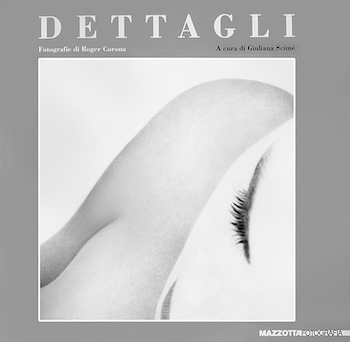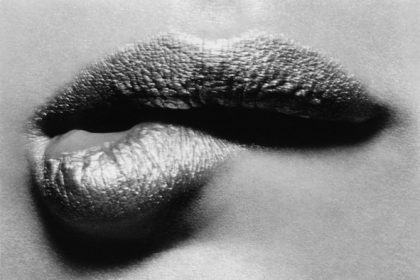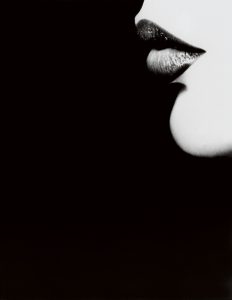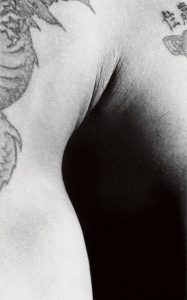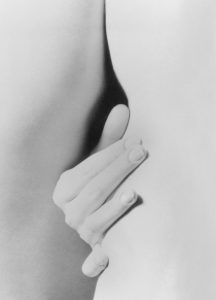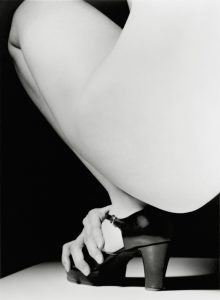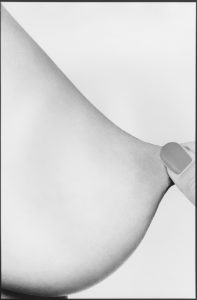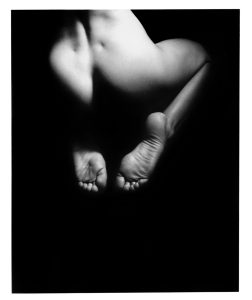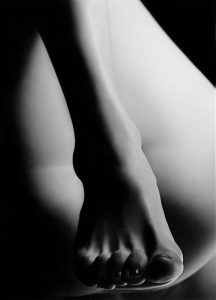Dettagli – preface by Roger Corona
The Dettagli project (“details”) comprises 62 images with a common thread, the study and examination of details. In a society pervaded by distraction, superficiality and haste, I thought it would be interesting and singular (in some ways nonconformist) to conduct an exploration of close-ups to focus attention not on everything, but on what is normally not observed (out of distraction? superficiality? haste?).
With these intentions I also created a project for Harper’s Bazaar Italia, where the protagonists were perfumes. I wanted to demonstrate to myself above all, but hopefully also to others, the possiblity of applying artistic photography to commercial needs. A possibility that is (wrongfully) rarely taken into consideration or used.
Roger Corona
Milan, October 1996
Dettagli (Details) – Extract of Essay by Giuliana Scimé
The human body is the highest level of form. Each and every form that has a reference to a geometrical pattern is contained in the body: curves; spheres; vertical, horizontal, oblique and squared lines; truncated cones and cylinders.
Roger Corona is aware that it lies in the balance between effrontery and modesty, something that conceals and at the same time reveals.
The forms are hinted at, and like a jigsaw puzzle, each piece surprises us and makes us curious to see what the final design is like. Each of Corona’s photographs is already a complete “design”, however, and with the play of fantasy we piece together the fragments to finish the story.
Corona’s style is an expression of refinement and culture. Not the slightest hint of vulgarity pollutes his art.
Thanks to his skilful use of composition and the perfection of his technique, even pictures that can be called forceful and transgressive can be admired for their pleasing harmony.
Corona’s style is an expression of refinement and culture. Not the slightest hint of vulgarity pollutes his art. Thanks to his skilful use of composition and the perfection of his technique, even pictures that can be called forceful and transgressive can be admired for their pleasing harmony.
But if these pictures were only seen in this light, they would have a purely aesthetic appeal and serve no other purpose than to please the eye. Instead, his awareness of form allows him to analyse the body in order to probe the mysteries linked to the relationship between external appearance and inner nature. He seeks to convey concepts throught a comprehensible object, a photo.
In other pictures, Corona’s exploits the splendid effects of intense black. The forms emerge from the darkness with barely perceptible tonal passages. The capacity to successfully create enchanting effects with black, and not white or shades of grey, is, indeed, a rare virtue. In Corona’s photographs, in fact, greys are absent.
Everything is sharp and precise; there are neither unnecessary details nor distracting visual tricks.
At times, the choice of the detail is bizzarre and nonconformist, a sign of a great capacity for invention that for us observers is yet another possibility to understand that the body is an inexhaustible source of adventure in the universe of form. Some fascinating examples of his photographs treat the body in an abstract manner. The forms and details are extracted and isolated from the complex of the human figure. They are difficult to recognize, or at least need to be studied with attention, obliging us to reflect on what we take for granted because it is so familiar.
Corona differs from other contemporary Italian and international photographers who have chosen the body as the subject of personal experimentation or commercial specialization. He has developed his own very original style, grounded in the careful attention he pays to the image itself and to technical problems. His output must be seen as a poetic tribute to harmony, an objective that must be reached in order to overcome the contradictions in our daily lives.
Giuliana Scimé
Milano, October 1996

